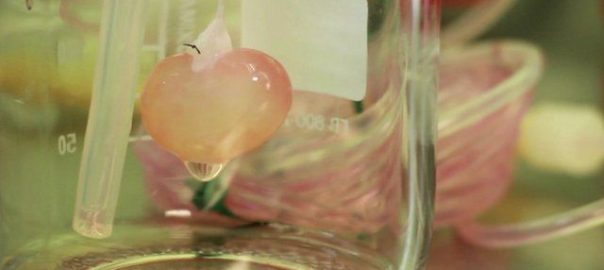Researchers are One Step Closer to Growing a Kidney in the Lab

Regenerative medicine has made great strides in the past few decades, but growing a whole organ in the laboratory has eluded medical science. The main reason is that a very large number of cells are needed to construct an entire organ. Now, researchers at Japan’s Kumamoto University and the National Cancer Institute in the United States are one step closer to growing a kidney in the lab.
Why is regenerating the kidney so important?
The kidneys play a life-sustaining role in the human body. They filter the blood, keep what is needed, and expel the rest as urine. They also play a critical role in controlling blood pressure by regulating water and salt concentration.
On a microscopic level, the structural and functional unit in the kidney is the nephron. It consists of the glomeruli and tubules where urine is made. These structures develop from kidney progenitor cells at the time of fetal development in the mother’s womb.
Once the kidneys are fully developed, these kidney progenitor cells are lost forever shortly following birth. Therefore, this essential organ cannot regenerate once its functionality is lost due to disease or injury.
What has the new research demonstrated?
The new research has demonstrated a method to culture kidney precursor cells in the laboratory in large numbers. These progenitor cells retain the ability to develop into nephrons. In 2013, a research group at Kumamoto University had succeeded in inducing progenitor cells to develop into nephrons, but they could not produce a sufficiently large quantity of progenitor cells. Other researchers have succeeded in culturing kidney progenitor cells in the past, but have failed to keep them viable for more than two to three days.
How did the researchers culture kidney progenitor cells?
Shunsuke Tanigawa, Assistant Professor at Kumamoto University, explains the procedure. Kidney progenitor cells were first isolated in mice. Then, the most favorable conditions to culture them were created. These precursor cells were labeled with a fluorescent marker. This allowed the researchers to monitor whether the progenitor cells were maintaining functionality. The group then ascertained which humoral factors would create the most appropriate culture conditions to accelerate the formation of kidney progenitor cells. A mix of LIF, WNT, BMP, and FGF at low concentrations was found to promote the proliferation of the progenitor cells.
Where did the new research succeed?
In this optimum culture, over a period of 20 days, the progenitor cells were able to increase in number by 1800 times. Researchers were also able to monitor these cells to ensure that they remained functional (i.e., they were able to form nephrons). In the human body, these cells cannot survive more than 10 days. Researchers were able to extend their viability to twice as long.
When will scientists grow a kidney in the lab?
This pioneering culture method has demonstrated that it is possible to exponentially increase the number of kidney progenitor cells as well as maintain their viability and functionality. This is one step closer to overcoming the hurdle of generating enough precursor cells to construct a whole organ. There is still a long way to go, though, before a kidney can be grown in the lab. Researchers are now working on increasing the viability of these cells. Further improvements in culture methods are being studied to increase progenitor cell proliferation.
References:
- http://www.eurekalert.org/pub_releases/2016-06/ku-eok060616.php
- Image courtesy of http://ichef-1.bbci.co.uk/


